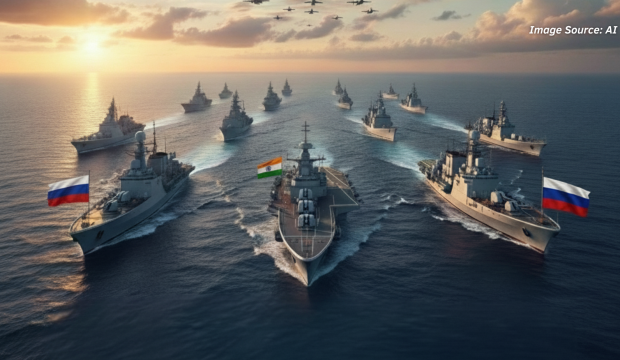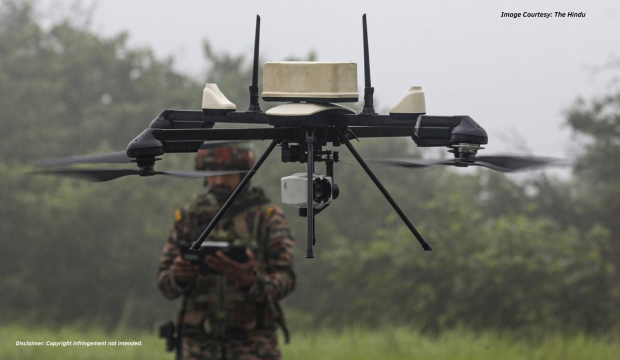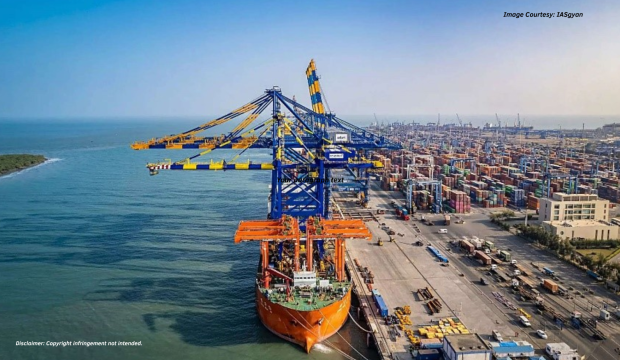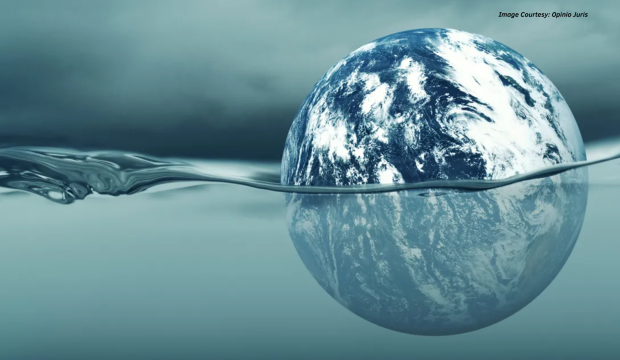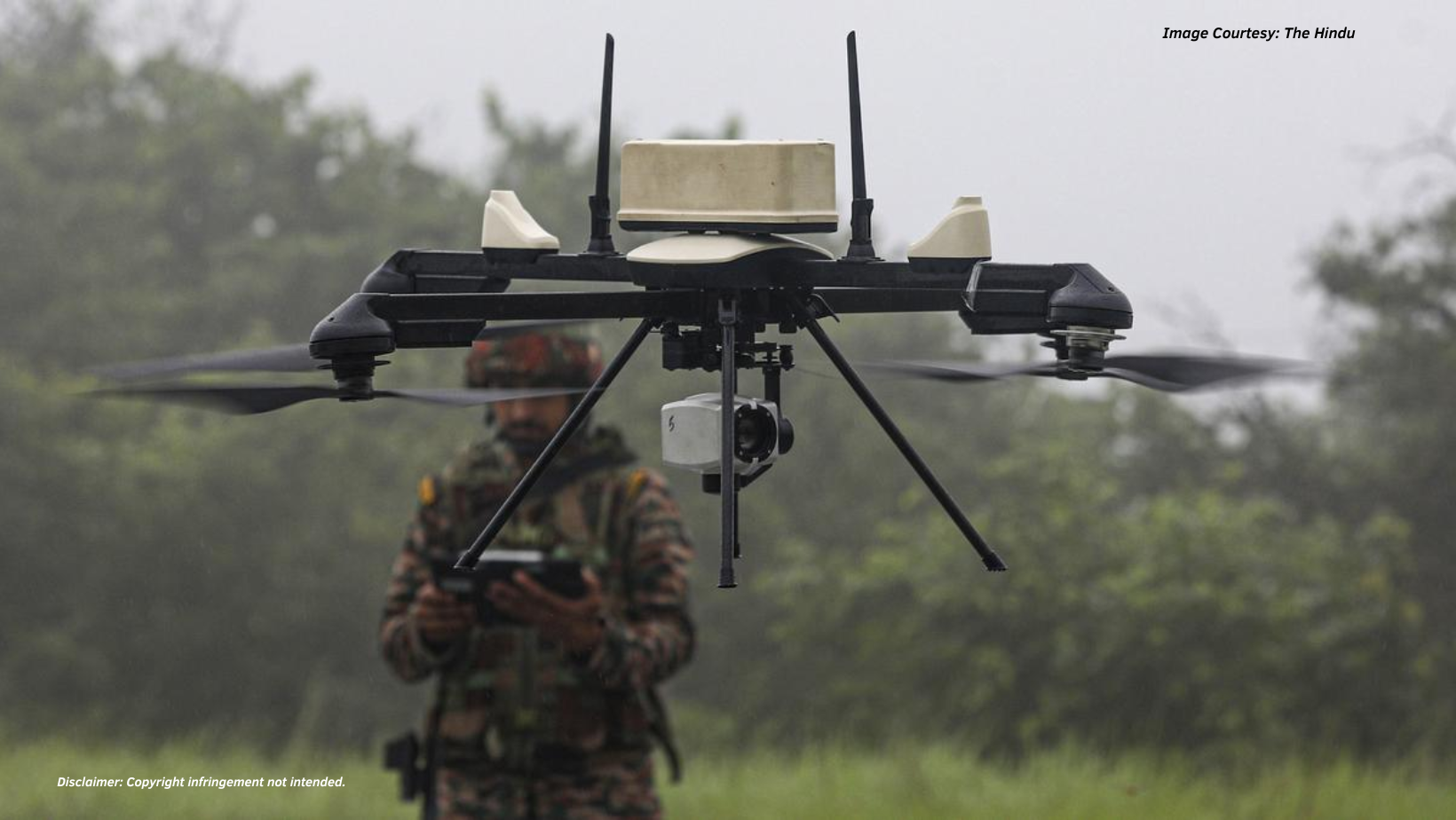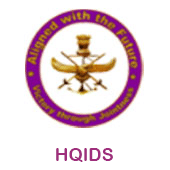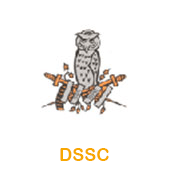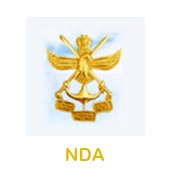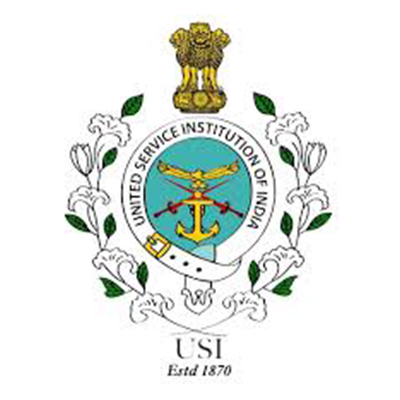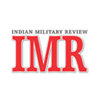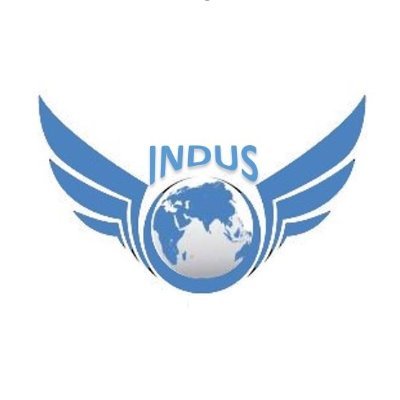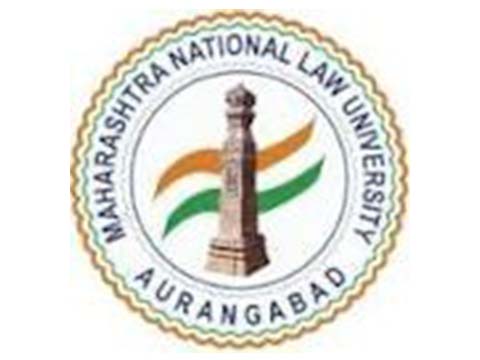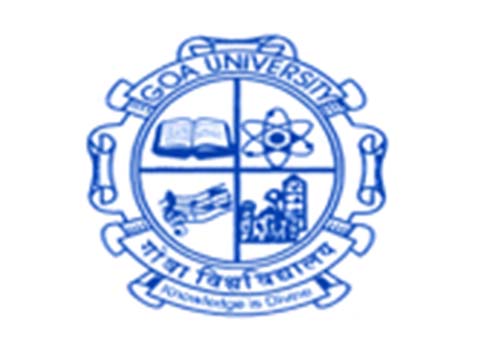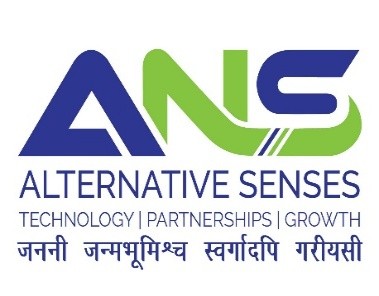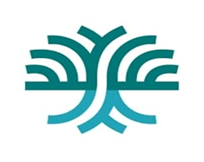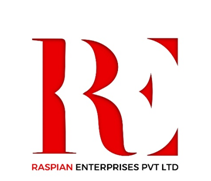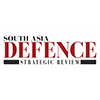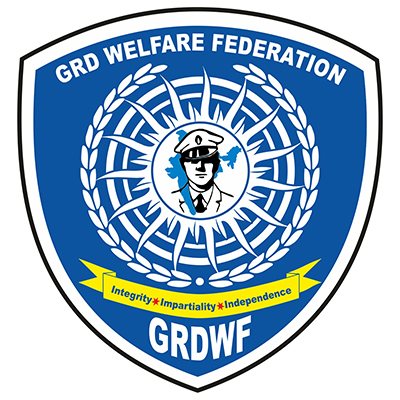Introduction
India and Kenya completed their 60 years of diplomatic relations in 2023. The two countries share a strong bond, built on a foundation of centuries-old historical ties that are diverse and harmonious. As geographic neighbours linked by the Indian Ocean, the two nations have a natural partnership driven by a shared past from colonial legacy to present-day diaspora connections and future aspirations. This relationship presents unique opportunities for constructive collaboration and mutual growth.
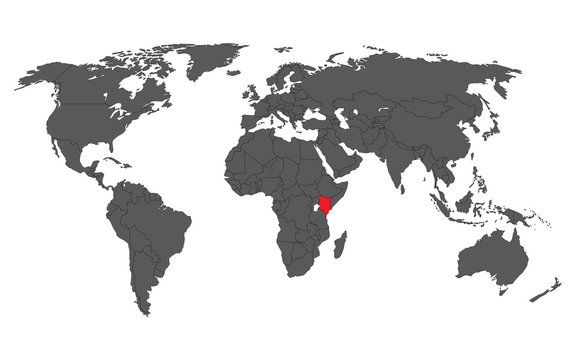
SOURCE: ADOBE STOCK
India has taken significant steps towards strengthening bilateral ties by establishing a Defence MoU with Kenya in 2016, the Joint Defence Cooperation Committee (JDCC) in 2019, and the more recent one came during a visit to India in December 2023 by Kenyan President William Samoei Ruto. Ruto and Indian Prime Minister Narendra Modi released a Joint Vision Statement on Maritime Cooperation, known as ‘BAHARI’ (Ocean in Swahili language), where the two nations have committed to joint efforts to boost maritime industry and trade, tapping the blue economy potential, facilitating joint exercises, in-ship visits and capacity-building measures.[1]
This comprehensive initiative of the vision statement aims to foster progress through maritime cooperation in the Indian Ocean region (IOR), recognising the value of collaboration in addressing challenges such as piracy and maritime terrorism. Furthermore, with this vision statement, the two countries aim to strengthen their ties across various sectors such as defence, trade, and industry. The initial investment in such capacity-building measures was made in August 2023, with the signing of a MoU between Goa Shipyard Limited (GSL), the largest exporter of defence ships in the Indian subcontinent, and Kenya Shipyard Limited (KSL), a state agency specialising in developing commercial and naval ships.
The Indian Navy has an abiding strategic interest in the Western Indian Ocean (WIO), building on the Indian initiative of SAGAR (Security and Growth for All in the Region) by serving as a ‘preferred security provider’ in the region. Kenya, quite similarly, is advancing towards diversifying its partnerships with countries like India and China as a part of its Vision 2030. The vision is centred on unlocking the vast potential of the blue economy in Kenya. This will be achieved by implementing effective maritime spatial planning and fostering growth in industry and trade related to the ocean. The ultimate objective is to transform Kenya into a “globally competitive and prosperous nation with a high quality of life by 2030.”[2]
India and Kenya are members of the Indian Ocean Rim Association (IORA) and reiterating the terms of the vision statement, have developed broader outlook policies towards the security and stability of the east coast of Africa and the WIO. This is evidenced by several efforts to improve the information-sharing networks and maritime domain awareness. India, recognising its role in the IOR, has offered Kenya a position for an International Liaison Officer to represent the Djibouti Code of Conduct- Jeddah Agreement (DCoC-JA) at the Information Fusion Centre-Indian Ocean Region (IFC-IOR).[3]
India’s rich and unique history of ties with East Africa has been invaluable in shaping India’s foreign policy towards the region. It is fascinating to see how this shared history is kept alive through a vibrant culture of remembrance, evidenced by the various cultural events organised by the Kenya-India Friendship Association (KIFA). In finding common ground in both nations’ political structures, President Ruto, in an attempt to woo the Indian investors highlighted the positive aspects of their shared democratic politics and emphasised the importance of elections as part of both countries. Witnessing how these historical ties are fostering mutual growth and development between India and East Africa is educative.
Enhancing Defence Cooperation
India’s engagement in critical areas of maritime transport, navigation safety, and efficiency reflects its commitment to the Central and East African countries. India’s proactive efforts in inviting the African Union to join the G20 summit as members in September 2023 echoed the country’s growing recognition of the African countries’ immense potential for economic and social advancement.[4] In an attempt to build a solid naval footprint in the region, India is now exploring the African continent’s defence market and continuing training programs and port calls with littoral countries to further common interests and promote peaceful resolution of maritime security issues.
Thanks to its non-lender approach, India has successfully maintained cordial relations with Africa for several decades, setting it apart from China. In India-Kenya relations, defence and security have emerged as crucial pillars. The first-ever India-Africa Army-Chiefs Conclave and the second edition of the Africa-India Field Training Exercise (AFINDEX) in March 2023 marked an essential step forward in enhancing cooperation and synergy between the armies of both countries. This cooperation mechanism can contribute significantly to regional stability and prosperity. The strengthened defence ties between India and Kenya are a significant milestone in further enhancing regional cooperation in several sectors.
The Indian Navy is strengthening its military ties with African nations by having Indian naval vessels visit allied states, making frequent port calls, and encouraging cooperation. The INS Sumedha has recently embarked on a strategic mission-based deployment from the Mediterranean to East Africa as a part of India’s efforts to show solidarity with regional allies.[5] The Saryu-class Naval Offshore Patrol Vessels (NOPV) are a proud example of indigenous shipbuilding, and the INS Sumedha is the third vessel in this series. It boasts advanced weaponry, sensors, and an integral helicopter’s added advantage.[6]
The Kenyan National Security Council took a significant step towards enhancing the country’s naval capabilities by engaging in a joint maritime exercise with the Indian naval forces. The event occurred in May 2023, when INS Trishul made a port call at Mombasa, Kenya and engaged with the Kenyan naval ship Jasiri in a Passage Exercise (PASSEX).[7] The exercise had a constructive goal of promoting interoperability and fostering cooperative partnerships to combat emerging maritime threats. The PASSEX aimed to improve the command and control of naval drills such as ‘Replenishment at Sea and Steam Past’, ultimately enhancing the ability to respond effectively to potential threats.[8]
India and Kenya are members of the Indian Ocean Littoral Countries (IOLC) and, as part of the multinational tri-service maritime Exercise Bright Star 23, were pivotal in promoting regional cooperation and contributing to global peace and stability.[9] The coastal neighbours are crucial in shaping policies and regulations in the WIO as essential ports and flag states, and their efforts are helping to promote greater stability and security in the region. The nations have started focusing on an institutionalised framework to enhance collaboration in joint military training and execution of peacekeeping operations, besides promoting Indian defence industries.
Kenya’s Engagements and Geopolitical Contestations
China
Kenya has relied heavily on funding to invest in its infrastructural developments as part of China’s Belt and Road Initiative (BRI). One of the vital projects temporarily halted at Naivasha, in the heart of the Rift Valley, is the rail link, which is now under discussion with China for resuming construction. The Standard Gauge Railway (SGR) initially linked the country’s capital, Nairobi, and the northwestern region of Naivasha with the port of Mombasa in its first phase and received an initial investment of USD 5 billion from China.[10]
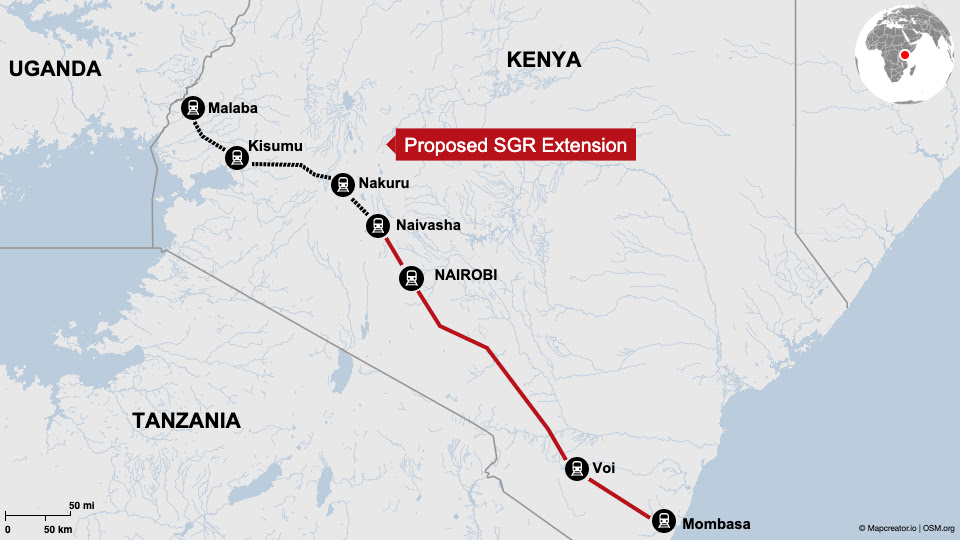
SOURCE: CHINA GLOBAL SOUTH
The project aimed to create a modern and efficient railway network connecting Nairobi and East African cities. However, it faced financial difficulties due to the significant debt incurred by the Kenyan government, resulting in China halting payments. Although China is a member of the G20 and has signed the debt relief deal, it did not agree to extend Kenya’s debt repayment period. Nevertheless, it continued to follow the original repayment schedule. It is worth noting that as of 2023, China accounts for around 64 percent of Kenya’s current stock of bilateral external debt. However, it is also important to recognise that multilateral borrowing is almost double the bilateral total and that the World Bank is Kenya’s largest external creditor.[11]
This further leads to differing opinions between Kenya and China regarding future infrastructure endeavours. Despite the diplomatic ripple if the option for a public-private financing scheme opens up between the countries, it could potentially attract more Chinese investors and pose potential competition for India.
Pakistan
It is noteworthy that Kenya’s growing bilateral ties with Pakistan are straining the India-Kenya partnership. However, Pakistan has become Kenya’s biggest exporter of valued goods such as leather, tea, spices, and coffee, with an estimated worth of around USD 321.44 million in 2023.[12] Kenya and Pakistan’s investment, education, trade, and interpersonal relationships are all essential components of their bilateral relations. They are firmly committed to furthering development and prosperity, reinforced by their BRI membership and investment partnership with China.
In December 2023, Pakistan’s High Commissioner Ibra Hussain Khan and President Ruto held a diplomatic meeting in Nairobi, Kenya. During the meeting, they delved into investment opportunities in the blue economy, which involves the sustainable use of marine resources, trade, and digital transformation. The conference aimed to strengthen the existing diplomatic ties between Pakistan and Kenya while exploring new avenues of cooperation that would benefit both countries.
The geopolitical contests between India, Kenya, Pakistan, and China in the WIO are complex and multi-faceted, with each nation executing its regional power play. Despite the similarities in their approach, there is no evidence of Kenya’s direct military engagement with China or Pakistan, which is a noteworthy fact. However, India’s regional ambitions face potential challenges from China’s expanding efforts to expand the BRI. Overall, the collaboration between India and Kenya is a descriptive representation of the positive outcomes that can be achieved through cooperation and shared interests.
Opportunities Ahead
India and Kenya have established a promising collaboration marked by impressive results. This partnership is a remarkable indication of Kenya’s growing strategic autonomy and assertiveness in pursuing its interests without external influence. India and Kenya have recognised that terrorism is a significant challenge that requires joint efforts to overcome. As a result, they have chosen to enhance their cooperation in counter-terrorism (CT).
The close ties between the two nations offer immense investment opportunities in various sectors, including the pharmaceutical industry, where India exports an impressive 70% of Africa’s pharmaceutical products. Five MoUs have been signed with the Indian government in critical areas such as energy, information and communication technology, health, and small and medium-sized enterprises. These agreements are expected to boost bilateral trade between the two nations and create opportunities for growth and development. The first trade deal, which involves the export of avocados from Kenya, is just the beginning of what could be a long and fruitful partnership.[13]
India’s position in East Africa has opened a window for future cooperation endeavours as Kenya agreed to enhance its health sector with mutual learning from Indian professionals, collaborative efforts in Unified payments Interface (UPI), fintech and cultural exchanges. Kenya’s geostrategic location is another feather in the cap, as the equatorial position provides additional benefits and minimises fuel requirements.
Space exploration comes as another facet of this partnership as the Indian Space Research Organisation (ISRO) has extended a ‘customised training program’ to the Kenya Space Agency with a total of 20 space scientists to bolster space research and technology.[14] In August 2023, a delegation from Kenya visited the ISRO headquarters to strengthen the partnership after the successful landing of Chandrayan-3. During the visit, India presented a detailed overview of its space ecosystem and achievements, which included constructive discussions on establishing space infrastructure, sharing knowledge and satellite data, and applying space technology in Kenya.[15]
India and Kenya have a robust financial relationship, bringing numerous investments in various sectors. Over USD 3.5 billion has been invested by 60 Indian companies, leading to the growth of manufacturing, real estate construction, and agro-based industries in Kenya.[16] This is evident by the recent USD 250 million Line of Credit to Kenya to modernise agriculture and assist farmers in dealing with food security challenges. The collaboration between the National Bank for Agriculture and Rural Development of India and the Agricultural Finance Corporation of Kenya will provide credit assistance to farmers.[17]
President Ruto is leading the charge in addressing climate change issues as chairperson of the African Union’s Committee of African Heads of State and Government on Climate Change (CAHOSCC). His recent call to action urges the implementation of sustainable practices in agricultural innovation and emphasises the importance of utilising natural resources. India and Kenya, both agrarian societies, have a unique opportunity to work together and contribute significantly to the global effort to tackle climate change issues through their energy, labour, and natural assets.
Furthermore, Kenya has joined the Alliance of Biofuels and Solar Alliance. This move will enable Kenya to tap into renewable energy sources, and with 92% of its electricity grid already powered by green energy, it is well on its way to becoming a hub for green manufacturing and industrialisation.
The heads of state took a positive step towards diversifying Kenya’s technological infrastructure by agreeing to establish a partnership between the Open University of Kenya and Indira Gandhi National Open University (IGNOU). The strong connection between India and Kenya has been reinforced through education. Around 3500 Kenyan students are pursuing their studies in India through private institutions and scholarships, such as the highly esteemed Raman Science Fellowships.
India’s relationship with Kenya has taken a positive step forward with the opening of Exim Bank of India’s representative office in Kenya. This move will not only strengthen the economic ties between the two nations but also provide Indian companies with an opportunity to invest in eastern Africa, thus expanding their global footprint. The association of EXIM Bank with other local and foreign banks is also a positive development that will contribute to the region’s growth.
Kenya’s abundance of critical minerals, classified as ‘strategic’, presents a unique opportunity to become a significant player in the global minerals market.[i] These minerals, including copper, cobalt, lithium, niobium, tantalum, and uranium, can drive economic growth and development in Kenya and contribute to global technological advancement and sustainability efforts.[19] Indian companies could benefit from exploring investment opportunities in pipeline construction, oil drilling and manufacturing units, similar to its success with Reliance Industries Ltd. with Gulf Africa Petroleum Corporation. The subsidiary unit currently dominates the import business at Mombasa Port.
By investing in such ventures, Indian companies could expand their operations and contribute to developing the energy sector in Kenya. Moreover, the expertise and resources they bring could help improve the efficiency and reliability of oil importation, benefiting both countries in the long run. These efforts to support Kenya’s development and foster a productive, long-lasting relationship reflect India’s commitment to its coastal neighbour.
Throughout centuries, India and Kenya have built a strong foundation of bilateral ties that have evolved from the age-old spice trade to present-day diaspora connections. As a result of the joint vision statement, trade agreements, and opportunities, the two countries have established a more ‘strategic ambience’. Kenya seeks to expand its partnerships and views India as a dependable partner amid the current stage of international reordering. This is the opportune time to elevate the relationship by advancing defence deals and closer cooperation in long-term aspects such as CT and cybersecurity. These efforts will undoubtedly enhance the partnership between the two nations and bring mutual benefits.
Conclusion
India’s strategic position in the Indian Ocean holds immense geopolitical significance, providing unparalleled access, sustainability, and mobility for its regional naval forces. As India rises on the crest of the wave travelling westwards across the Indian Ocean, it should keep the interests of other countries in mind and follow an approach guided by inclusivity and mutual benefit.
The WIO is a critical maritime area where India can offer its expertise and experience to regional partners, who can follow suit as part of the SAGAR policy and other policies surrounding the blue economy. With China intensifying its coercive and hostile efforts in the region, India must compete with that by building a more inclusive regional eco-maritime framework. The vision statement must be made on trust and coordination of shared interests, which will lead to regional equilibrium and economic growth, significantly serving the interests of India and Kenya.
DISCLAIMER
The paper is author’s individual scholastic articulation and does not necessarily reflect the views of CENJOWS. The author certifies that the article is original in content, unpublished and it has not been submitted for publication/ web upload elsewhere and that the facts and figures quoted are duly referenced, as needed and are believed to be correct.
References
- Press Information Bureau, “India- Kenya Joint Vision Statement on Maritime Cooperation in the Indian Ocean Region – “BAHARI”, Ministry of External Affairs, 05 December 2023. https://www.mea.gov.in/bilateral-documents.htm?dtl/37341/India_Kenya_Joint_Vision_Statement_on_Maritime_Cooperation_in_the_Indian_Ocean_Region__BAHARI#:~:text=In%2DShip%20Visits%20and%20Joint,and%20enhancing%20maritime%20security%20capabilities.
- Department of Physical Planning, “National Spatial Plan 2015-2045”, Kenya Vision 2030. https://vision2030.go.ke/publication/kenya-national-spatial-plan-2015-2045/
- Ibid.
- G.G. Dwivedi, “India–Africa Defence Cooperation: A Strategic Perspective”, Journal of Defence Studies, Vol. 17, No. 3 (July-September 2023:148-156. https://www.idsa.in/system/files/jds/jds-17-3_G-G-Dwivedi.pdf
- Ranjit Kumar, INS Sumedha Is On A Grand Mission To African Coast, ABP News, 17 December 2023. https://news.abplive.com/india-at-2047/ins-sumedha-is-on-a-grand-mission-to-african-coast-exercise-bright-star-2023-sagar-initiative-india-africa-ties-abpp-1650460
- Press Information Bureau, “INS Sumedha Maiden Entry at Port Lamu, Kenya”, Ministry of Defence, 10 December 2023. https://pib.gov.in/PressReleaseIframePage.aspx?PRID=1984670
- Ministry of Defence, Kenya Navy and Indian Navy Conduct Passage Exercise, Kenyan Defence Force. https://mod.go.ke/news/kenya-navy-and-indian-navy-conduct-passage-exercise/
- Ibid.
Ranjit Kumar, INS Sumedha Is On A Grand Mission To African Coast, ABP News, 17 December 2023. https://news.abplive.com/india-at-2047/ins-sumedha-is-on-a-grand-mission-to-african-coast-exercise-bright-star-2023-sagar-initiative-india-africa-ties-abpp-1650460
- Jevans Nyabiage, “Kenya pins rail hopes on PPP funding from China firms for belt and road project”, South China Morning Post, 23 December 2023. https://www.scmp.com/news/china/diplomacy/article/3245773/kenya-pins-rail-hopes-ppp-funding-china-firms-belt-and-road-project
Fergus Kell, “Kenya’s debt struggles go far deeper than Chinese loans”, Chatham House, 31 May 2023. https://www.chathamhouse.org/2023/05/kenyas-debt-struggles-go-far-deeper-chinese-loans
- Business Daily, “Pakistan overtakes US as Kenya’s top exports earner”, The East African, October 2023. https://www.theeastafrican.co.ke/tea/business/pakistan-overtakes-us-as-kenya-s-top-exports-earner-4413742
- Press Trust of India, “Kenyan President invites Indian companies to set up manufacturing units”, Business Standard. 05 December 2023. https://www.business-standard.com/world-news/kenyan-president-invites-indian-companies-to-set-up-manufacturing-units-123120501117_1.html
Diksha Jain, “The Upcoming Djibouti Spaceport Project”, CESCUBE, 03 October 2023. https://www.cescube.com/vp-the-upcoming-djibouti-spaceport-project
ISRO, “High level Kenyan delegation visited ISRO”, ISRO, August 31 2023. https://www.isro.gov.in/Kenyan_delegation_visited_ISRO.html
Gurjit Singh, “Kenya sees India in a new hue”, ORF, 13 December 2023. https://www.orfonline.org/expert-speak/kenya-sees-india-in-a-new-hue
- Florah Njoroge, “Kenya, India To Expand Partnership In Technology”, Capital News, 05 December 2023. https://www.capitalfm.co.ke/news/2023/12/kenya-india-to-expand-partnership-in-technology/
- Frankline Sunday, “What classification of some minerals as strategic means”, The Standard, 07 November 2023. https://www.standardmedia.co.ke/business/financial-standard/article/2001484837/what-classification-of-some-minerals-as-strategic-means#google_vignette
- Ibid.




